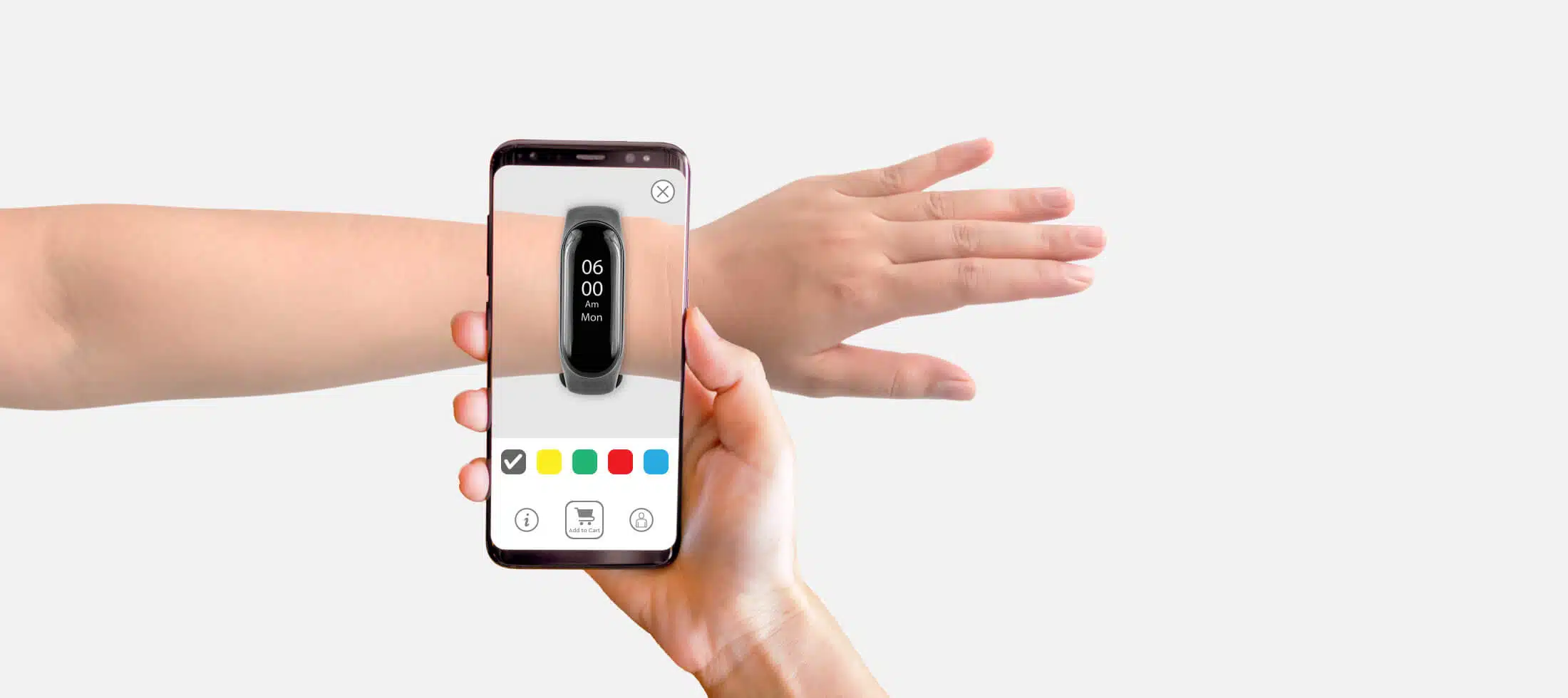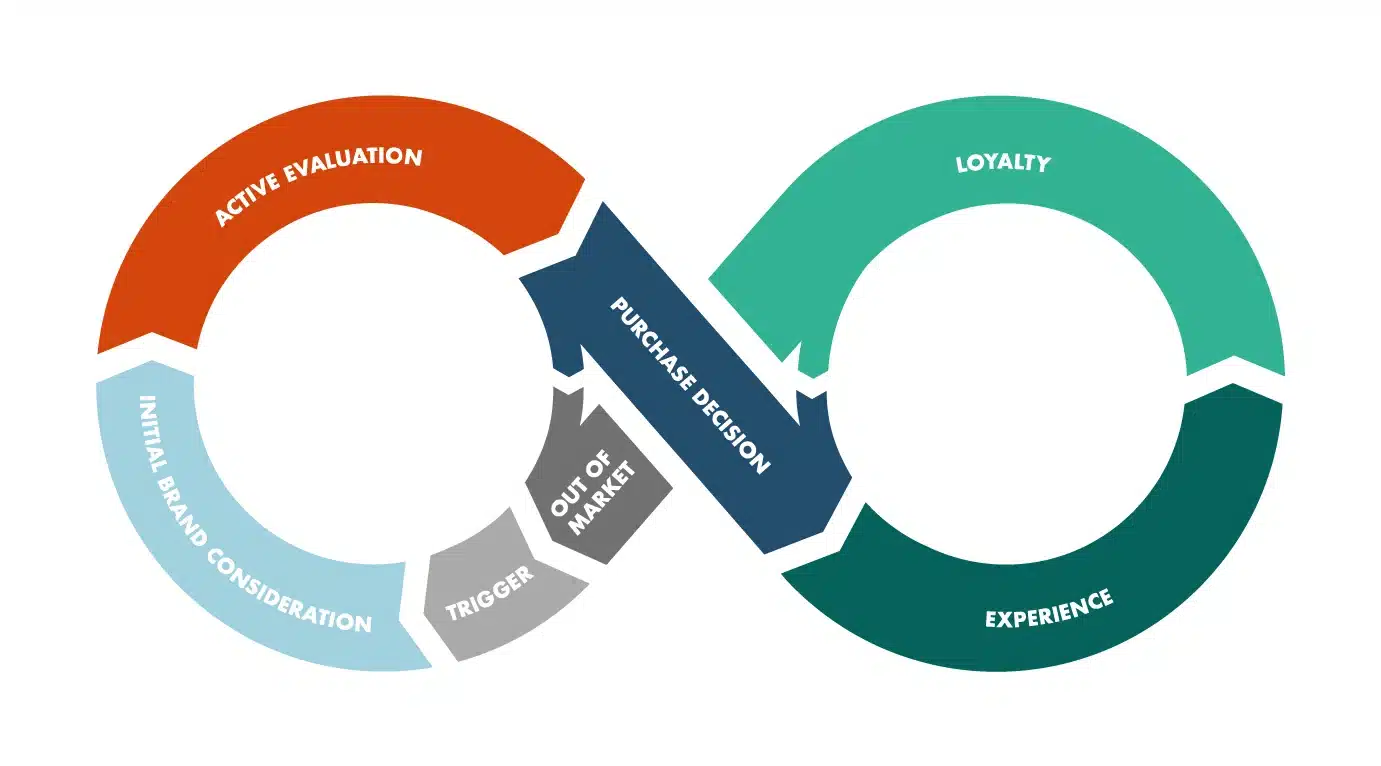
Augmented reality (AR) is transforming the online shopping landscape as we know it. By seamlessly overlaying digital elements onto the real-world environment, AR unlocks immersive, interactive experiences that bring products to life for customers. From virtually trying on sunglasses to previewing how furniture fits within a room, AR-powered shopping bridges the physical and digital worlds.
In this blog, we’ll explore the exponential growth of augmented reality and its ability to revolutionise e-commerce. You’ll discover how leading retailers leverage AR for virtual try-ons, digital product displays and next-level consumer engagement. We’ll also spotlight emerging trends and real-world examples of AR delivering impressive ROI across metrics from sales to customer satisfaction. By the end, you’ll gain actionable advice for bringing your own e-commerce offerings into an augmented future. Let’s dive in!
Understanding Augmented Reality (AR)
Augmented reality overlays computer-generated sensory information onto real environments. Unlike virtual reality which fully replaces reality with a simulated world, AR complements and enhances physical spaces with interactive digital elements.
Key capabilities include:
- Displaying 3D virtual objects tied to locations the user views through a device’s camera. For example, augmenting a printed ad with an animated virtual product model.
- Anchoring animations and effects to physical “triggers” like QR codes, images or GPS coordinates that activate when users engage with these markers.
- Enabling users to interact with virtual elements through touch, voice and gestures as if they were real-world items. This creates an immersive, multidimensional experience.
With smartphone adoption surging, AR accessibility has grown exponentially. Global consumer AR use cases will approach 4.8 billion in 2025 according to projections. From entertainment to education and commerce, AR continues permeating daily life.
The Impact of AR on e-Commerce
Retail constitutes one of the most promising domains for augmented reality. By enabling shoppers to preview products in context as if physically present, AR drives discovery, confidence and sales. No longer does a customer need to envision how an item might look in their space. AR places it right before their eyes to inspect from all angles.
Specific retail applications include:
- Virtual Try-Ons – Digitally “wear” clothes and accessories using only a smartphone camera. Swap hairstyles, test makeup shades or see watches on your wrist.
- In-Situ Visualisation – Preview furniture, appliances or decor items within existing environments like your living room. Scaled 3D models reflect real dimensions, style fit and arrangement options.
- Product Configurators – Customise selections by adjusting colours, textures and components before ordering. Whether creating sports shoes or designing sofas, personalised creations come to life.
- Interactive Product Sampling – Engage directly with 3D product demos by manipulating parts and inputs instead of static images alone. This builds familiarity with items like electronics or home fitness equipment.
To make AR shopping seamless, many brands now integrate augmented reality directly into their native mobile apps and websites using Apple’s ARKit and Google’s ARCore developer tools paired with 3D product modelling.
AR-Powered Shopping Experiences
Let’s explore popular AR use cases elevating modern e-commerce:
Virtual Try-Ons
Imagine never having to gamble on apparel fit or style suitability again. AR virtual try-on capabilities now let you preview outfits on your own shape using just a smartphone. Whether assessing a dress length, testing makeup hues or seeing if a watch visually appeals, personalised digital mirrors enable low-risk browsing.
Leading online fashion retailer ASOS experiences 20% higher click-through rates for items with AR models. The technology also boosts user time spent on the app. Cosmetics giant L’Oreal reports millions of eyeshadow and lipstick AR try-ons leading to increased sales. As the tech and content improves, adoption accelerates.
In-Situ Visualisation
Lengthy online debates over “will this living room accent chair match my décor and fit in the corner?” become history thanks to AR visualisation. Houzz, Wayfair, IKEA and other furniture brands now let you preview 3D room-scale models of products in your actual space. This provides realistic spatial context for informed purchasing beyond guesswork. Home improvement brand Lowe’s alone saw 13K cabinetry sales in 10 months after launching an AR shopping tool. As AR gains traction, expect more immersive previews bridging the gap between expectations and reality.
Interactive 3D Product Demos
For items relying heavily on tactile sensations, detailed mechanisms or demonstration of capabilities, 3D models users control inspect every facet intimately. This drives understanding beyond images alone.
Cosmetics companies let you examine virtual products from all angles before buying. Electronics brands showcase navigating apps and UI through AR demos. Gucci has shoppers customise virtual sneakers combining materials and colours using gesture controls. Configuring and handling 3D models directly provides tangible value driving conversions.
Benefits of AR in e-Commerce
Now that we’ve explored implementations, let’s examine why AR proves so valuable:
Boosts Engagement and Conversion
AR average conversion rates currently hover around 94% higher than non-AR product pages. The interactive previews grab attention while building confidence to click “Add to Cart”. IKEA notes300 million virtual furniture placements using its AR tools over 4 years. Lower returns also signal customers make informed choices.
Enhances Understanding
Manipulating 3D models drives comprehension beyond images and video. Particularly for nuanced items like cosmetics and electronics, AR boosts familiarity boosting consumer readiness to purchase.
Optimises Marketing Spend
A polling of brand marketers found companies evaluate AR driving 20%+ lifts across metrics from sales to satisfaction to brand awareness. Delivering such revenue return on ad invest makes adoption compelling.
Creates Competitive Differentiation
An Accenture survey showed over half of consumers prefer retailers offering AR experiences. Forward-thinking brands distinguishing themselves through innovation and immersion earn audience mindshare.
Lowers Barriers
By tackling hesitations over sizing, aesthetics and functionality before orders ship, AR alleviates purchasing risk, reducing friction for first-time and repeat customers.
Trends in AR-Powered Shopping
Emerging technologies continue advancing AR e-commerce capabilities:
Hyper-Realistic Rendering
Photogrammetry perfectly replicates physical retail spaces online through 3D scene reconstruction using digital images. Combined with true-to-life 3D models, virtual try-ons reach new levels of realism.
Reduced Hardware Barriers
While AR commerce initially relied on QR code scanning or apps, WebAR delivers experiences directly through mobile browsers removing friction. Smartglasses also bring hands-free augmented shopping.
Expanded Environment Integration
Objects no longer just float virtually but also realistically interact with environments through physics and occlusion. This seats digital models firmly into physical spaces.
Enterprise AR Platforms
All-in-one developer suites from Zappar and 8th Wall lower barriers for retailers to build mixed reality apps with device agnostic experiences, backend CMS integration and analytics.
Deep Learning Optimisation
As algorithms ingest billions of data points mapping human dimensions, product dynamics and environments, AR personalisation and accuracy keep improving.
Together these breakthroughs steadily bridge the lingering consumer gap between physical and digital purchasing.
AR Case Studies
Global beauty brand L’Oreal saw makeup sales jump 40% six months after launching Style My Hair, an AR virtual try-on and discovery app letting users preview hair colour shades on live camera views. The viral popularity cemented AR’s profit potential.
Cosmetics retailer Sephora achieved over seven figures in attributed revenue through augmented reality product sampling experiences for mobile. 3D realism assisted consumers find correct makeup shades and finishes before buying.
Encouraged by AR’s 20% sales lift for displayed items, eyeware giant Warby Parker unveiled an AR feature in its iPhone app enabling at-home virtual try-ons of thousands of glasses with precise fit and positioning.
These examples demonstrate AR’s impressive ability to drive measurable business metrics from revenue to retention when thoughtfully implemented.
The Future with AR
Industry analysts predict the global retail AR market size growing six-fold by 2028 as shopping moves beyond transactional e-commerce into experiential encounters.
Omnichannel AR adoption will empower customers to virtually browse store inventory at home through photorealistic digital twins, identify exact shelf locations for items using indoor navigation and unlock self-service kiosks, displays and mirror fitting rooms blending physical and augmented elements in-store.
Meanwhile, increasingly accurate body meshing and motion capture will enable revolutionary VR hybrid experiences like virtual fashion shows from home or 3D product collaboration in persistent branded metaverse spaces online. The possibilities remain exponentially expansive.
Practical Considerations
For brands exploring augmented reality’s potential, focus first on highlighting hero products demonstrating AR’s value, then scale across categories. Consider only launching once performance optimisation and thorough testing occurs. Capture user analytics like interactions and conversions to showcase ROI and identify areas of friction.
When architecting experiences, concentrate AR to complement key shopping tasks, not overwhelm them. Ensure accessibility for varying physical abilities and environments. Promote AR features through store associates, email campaigns and social media creatives to drive awareness alongside app updates.
By blending visionary technology with human-centric design and strategic rollout, merchandise jumps into the future while customers comfortably in tow.
Join the AR Revolution in e-Commerce Today!
Consumer practices rapidly evolve as spatial computing permeates shopping. Pioneering brands have only scratched the surface leveraging augmented reality’s power for deepening connections through revolutionary virtual product experiences. With projections of over $140 billion in retail AR revenue by 2030, the space promises tremendous growth. Yet seamless execution relies on the technical expertise to translate immersive visions into accessible everyday digital moments.
Contact us today to learn more about your Digital Marketing Strategies.
By Manesh Ram, Digital Marketing Specialist. Please follow @maneshram & Meta





